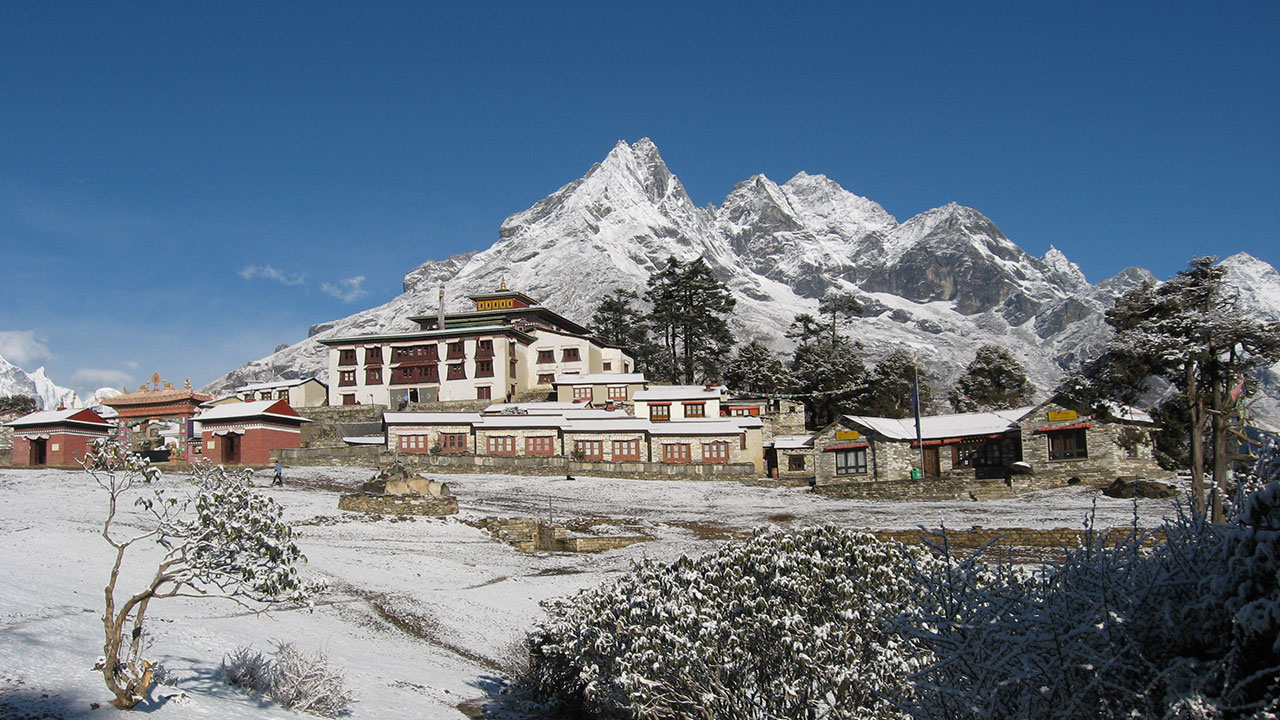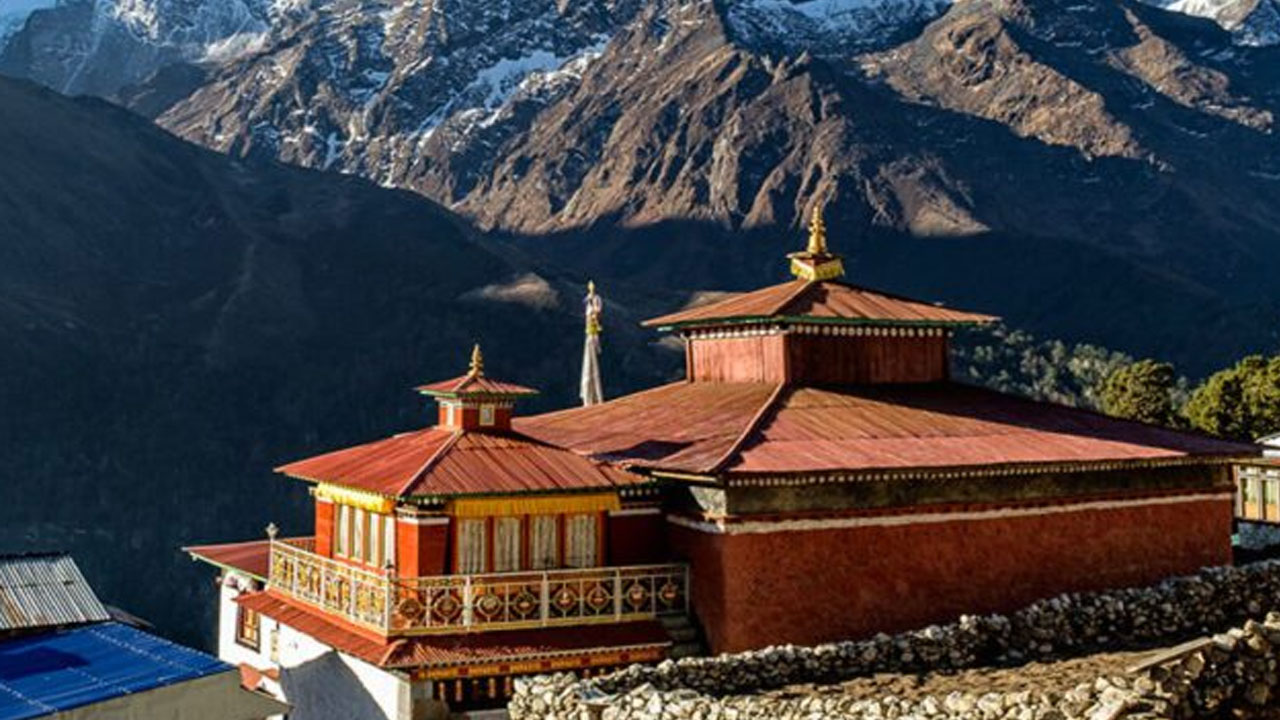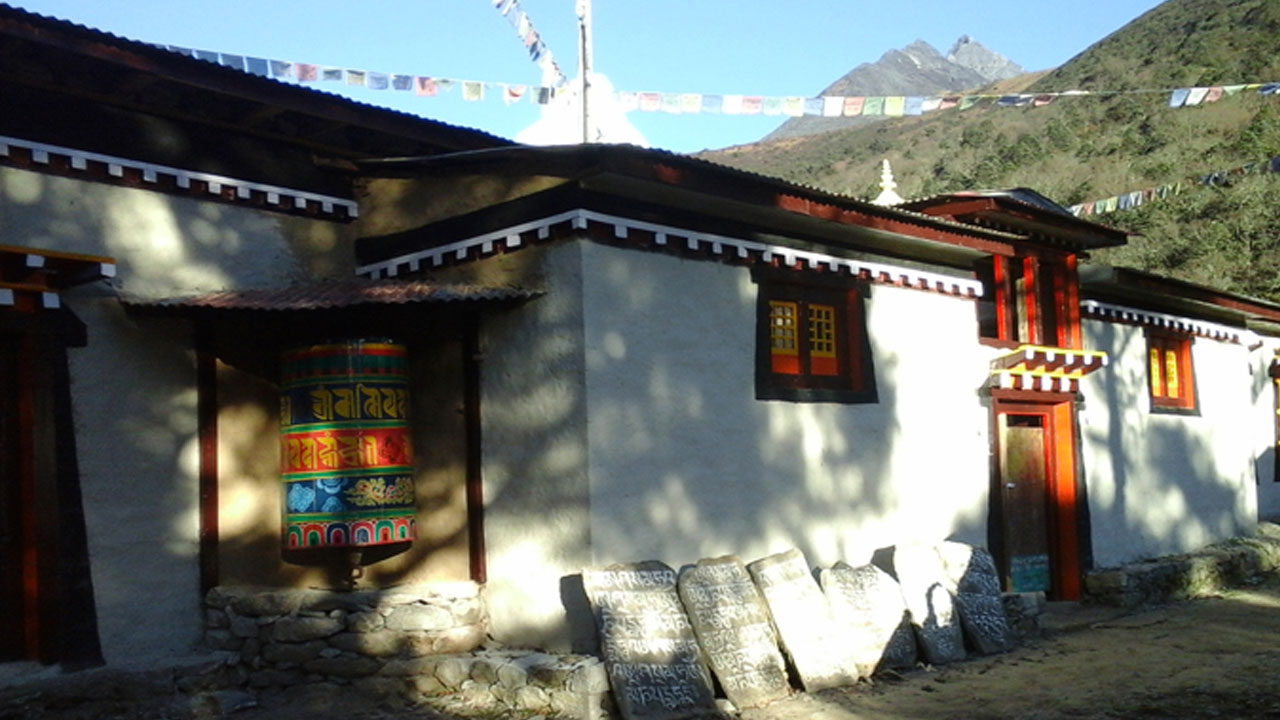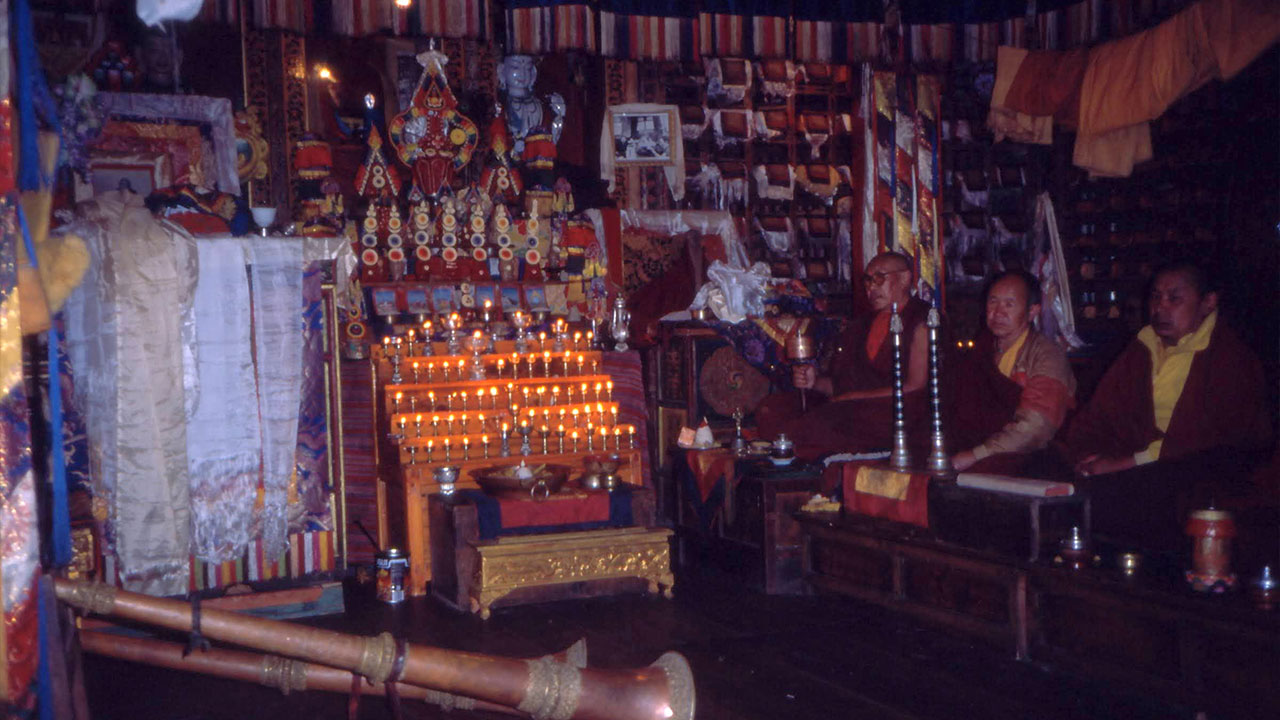The Everest Base Camp Trek is one of the most popular trekking journeys in the world. Every year, thousands of trekkers walk through the beautiful Khumbu region to see Mount Everest. This trek is not only about mountains, glaciers, and adventure. It is a journey filled with culture, history, and spiritual beauty. Along the trail, you will also come across many old monasteries, which are also known as Gumbas. These peaceful places make the journey richer and more meaningful.
When you visit the Everest Base Camp trek monastery, it gives you a chance to understand the Sherpa people and their Buddhist traditions. The Sherpa community has lived in this region for centuries. Their lifestyle is strongly connected to monasteries. These sacred places show their faith, values, and respect for nature. The sound of prayer wheels, the beauty of colourful prayer flags, and the calm chants of monks help trekkers feel peace even during a challenging trek.
A monastery on the Everest Base Camp Trek is not just a building. It is a place where trekkers can rest, pray, and experience the spiritual side of the Himalayas. These Gumbas stand proudly along the trail and guide trekkers with blessings and positive energy. Whether small or large, each monastery has its own story and importance.
In this blog, we will explore the major monasteries along the Everest Base Camp route, their history, their role in local life, and why they make our trek unforgettable. This journey is not only to the base of Everest, but it is also into the heart of Sherpa culture.
Importance of Monasteries in the Everest Region
Monasteries or Gumbas are an important part of life in the Everest region. For the Sherpa people, these monasteries are not just religious buildings; they are the center of their culture, learning, festivals, and traditions. Every village along the Everest Base Camp trail has a small or large monastery where people gather for prayers, ceremonies, and community events. These Gumbas help to keep the Sherpa lifestyle and Buddhist beliefs strong, even in the modern world.
A monastery on the Everest Base Camp Trek has many roles. It teaches Buddhist values like kindness, peace, and respect for all living beings. Monks spend their lives studying, teaching, meditating, and guiding the community. Before climbing high mountains, many Sherpa climbers visit the monasteries to receive blessings for safety and success. This shows how deeply connected their faith is to their daily life.

For trekkers, visiting the Everest Base Camp Trek gumba brings a new experience. The inside of the monastery is filled with colourful paintings, statues, old sculptures, and butter lamps. The sound of monks chanting creates a peaceful environment. Many trekkers say they feel calm and refreshed after spending even a short time inside a monastery.
Monasteries also protect the natural environment. Buddhist teachings remind people to treat nature with respect. This helps to preserve the mountains, forests, and animals of the Everest region.
In simple words, monasteries make the Everest Base Camp Trek more than a physical journey. They add culture, spirituality, and meaning to every step. They help trekkers connect not just with the mountains but also with the heart of Sherpa life.
The Most Famous Gumba: Tengboche Monastery
Tengboche Monastery is the most popular and important Everest Base Camp Trek. Almost every trekker who walks towards Everest Base Camp stops here not only for rest but also to experience the spiritual beauty of the monastery. It is located at 3,867 meters. The monastery sits on a wide open hill with stunning views of Mount Everest, Ama Dablam, Lhotse, and many other peaks. Because of this beautiful setting, Tengboche is often called the most scenic monastery in the Himalayas.
The monastery was built in the early 1990s. It has been rebuilt several times due to fires and earthquakes. Today, it stands as a strong symbol of Sherpa culture and Tibetan Buddhism. Trekkers usually arrive at Tengboche in the afternoon, just in time to see the monks perform their daily prayers. The deep sound of chanting, the soft ringing of bells, and the smell of incense create a peaceful atmosphere that many trekkers remember for life.
Inside Tengboche Gumba, you can see large statues of Buddha, colorful wall paintings, old scripts, and butter lamps lighting the hall. The monastery is also the spiritual center for many Sherpa villages around the region. Climbers heading to Everest often come here to receive blessings from the head Lama for safety on their expedition.
More than just a stop on the trail, Tengboche Monastery helps trekkers feel the true heart of the Khumbu region. Its beauty, both natural and spiritual, adds a deep meaning to the Everest Base Camp Trek.

The Oldest Monastery in the EBC Trek: Pangboche Monastery
Pangboche Monastery is another important monastery on the Everest Base Camp Trek. It is believed to be the oldest monastery in the entire Khumbu region. It is located in the beautiful village of Pangboche. This Gumba sits around 3,985 meters. It has a long history that connects deeply with Sherpa Culture. Many trekkers visit Pangboche to see its ancient design, peaceful environment, and rich spiritual tradition, which have been followed for centuries.
The monastery is said to have been founded by Lama Sange Dorje, who is a respected spiritual leader. Locals believe that he had a strong passion for meditation and brought blessings to this region. Pangboche Monastery is a sacred place for both Sherpa and trekkers. Some people even come here to pray for protection before climbing higher mountains.
Inside the Gumba, you can see old statues, holy sculptures, hand-painted murals, and unique artifacts preserved for generations. One of the interesting stories linked to the monastery is the “Yeti” legend. For many years, Pangboche kept a so-called “Yeti Scalp” as part of its heritage. Although it can not be scientifically proven, the story still attracts many curious visitors from around the world.
The monks in Pangboche continue their daily prayers just as their ancestors did. The calm sound of chanting and the smell of burning incense create a peaceful space where you can rest and reflect. With its deep history and spiritual energy, the Pangboche Monastery adds great meaning to the Everest Base Camp Trek Gumba experience.

EBC Trek’s Quiet and Scared Stop: Khumjung Monastery
Khumjung Monastery is another peaceful and important Everest Base Camp Trek. It is located in the beautiful village of Khumjung. This village is known for its traditional Sherpa lifestyle, green fields, and warm community. Trekkers often visit Khumjung Monastery during their acclimatization day in Namche Bazaar. This makes the monastery an easy and meaningful stop on the way to higher altitudes.
The Khumjung Gumba is simple, calm, and full of energy. Though it is not as large as Tengboche or as old as Pangboche, it still plays an important role in the daily life of the local Sherpa people. Here, monks study Buddhist teachings, perform prayers, guide the community, and lead the important festivals throughout the year. Trekkers who enter the monastery can see colourful paintings, statues of Buddhist deities, prayer flags, butterlamps, and old scriptures preserved with great respect.
One of the unique attractions of Khumjung Monastery is the legendary “Yeti Scalp".The monastery keeps a small piece of hair and skin inside a glass box, which the community believes to be linked to the mythical Yeti. Even though scientists cannot confirm its truth, the story adds mystery and curiosity to the monastery. Many trekkers visit Khumjung just to see this interesting relic.
The peaceful environment of Khumjung Monastery helps trekkers relax, meditate, and understand Sherpa Culture more deeply. Surrounded by mountains and quiet villages, this Gumba offers a chance to connect with the spiritual heart of the region. It reminds trekkers that the Everest Base Camp journey is not only about climbing high, but it is also about learning and experiencing the traditions that make the trail special.

A Peaceful Home For Buddhist Nuns: Deboche Nunnery
Deboche Nunnery is one of the most peaceful spiritual places on the Everest Base Camp trail. It is located just below Tengboche. This is quite a nunnery surrounded by forests, rhododendron trees, and the soft sound of flowing streams. Unlike large monasteries run by monks, Deboche is a special place where Buddhist Nuns live, study, and practice meditation. Many trekkers do not know about it, but it is one of the oldest nunneries in the Khumbu region.
Inside the Deboche Nunnery, the atmosphere is simple and calming. The nuns wake up early for prayers, keep the place clean, lean, and follow a life of discipline and devotion. Their chanting sounds gentle and peaceful, giving visitors a warm feeling. The nunnery also protects and teaches young girls who wish to live a spiritual life.
Deboche is a meaningful stop on the trail because it shows another side of Himalayan Buddhism. Trekkers learn that spiritual life in the mountains is not only carried by monks but also by dedicated nuns who work quietly to keep traditions alive. The kindness and softness of life here bring a deep sense of peace, which makes Deboche Nunnery a hidden gem on the Everest Base Camp Trek.

A Spiritual Jewel of the Khumbu Valley: Thame Monastery
Thame Monastery is one of the most peaceful and meaningful monasteries in the Everest region. It is located in the quiet village of Thame. This Gumba is slightly away from the EBC trail, but many trekkers visit it during acclimatization walks. The monastery sits on a hillside surrounded by beautiful mountains, giving it a calm and spiritual atmosphere.
Thame monastery is known for its strong connection to Sherpa history. Many famous climbers, including Tenzing Norgay Sherpa, lived in this village. The monastery also hosts the important Mani Rimdu festival, where monks perform traditional masked dances and rituals to bless the Community.
Inside the monastery, you can see colorful paintings, prayer books, statues, and glowing butter lamps. The sound of monks chanting spread peace throughout the valley. Thame monastery helps trekkers understand the deep spiritual life of the Sherpa People and offers a quiet, heartwarming experience in the mountains.

Smaller Monasteries and Mani Walls Along the Trail
Besides the famous monasteries like Tengboche, Pangboche, and Khumjung, the Everest Base Camp trail is filled with many smaller sacred places. These include small monasteries, prayer wheels, mani walls, and chortens. They may look simple, but they hold deep meaning in the daily life of the Sherpa People. For trekkers, these small spiritual spots make the journey peaceful and culturally rich.
As you walk on trails, you will often come across long stone walls carved with the Buddhist mantra “Om Mani Padme Hum”. These are called Mani walls. The carvings share prayers for peace, compassion, and protection. Trekkers should always pass these walls from the left side as a sign of respect. This small act helps trekkers to feel connected to the local culture.
Prayer wheels are another common sight. You spin the wheel gently as you walk by, believing the prayers inside the wheel spread positive energy. These wheels remind trekkers to stay calm, kind, and focused during the journey.
You can also see chortens, which are white Buddhist structures made of stone. They represent important teachings of Buddha. They are considered powerful spiritual symbols in the Khumbu region.
Many villages also have small Gumbas where monks gather for daily prayers. They may not be large or famous, but they are an important part of Sherpa’s life. These places protect tradition, guide the community, and offer blessings to travellers.
Together, these small monasteries and spiritual structures make the Everest Base Camp Trek more than a physical walk. They turn it into a peaceful and meaningful journey filled with culture and blessings.
Monk Lifestyle and Buddhist Practices Trekkers Can See
One of the most special parts of visiting the Everest Base Camp Trek monastery is seeing how monks live and practice Buddhism in the Himalayas. Their lifestyle is simple, peaceful, and focused on meditation, study, and helping the community. Trekkers often feel inspired when they observe monks carry out their daily routines.
Monks usually start their day early in the morning with prayers and chanting. These prayer sessions create a calming sound that fills the monastery halls. Trekkers are sometimes allowed to sit quietly and listen. The deep chanting, the beating drums, and the ringing of small bells create a peaceful environment that many people find unforgettable.
Inside the monasteries, you will see butter lamps glowing softly. These lamps represent wisdom. They are offered as prayers for good health, safety, and peace. The walls are decorated with colorful paintings that show important moments from the life of Buddha. These art pieces help teach Buddhist values like compassion, patience, and kindness.
You can also observe the use of prayer wheels, incense, and prayer flags. Spinning the prayer wheel is believed to spread blessings into the world. Burning incense creates a clean and sacred atmosphere. The colourful prayer flags hung outside the monastery send prayers to the wind. They spread peace across the mountains.
During festivals, monks lead ceremonies filled with music, dance, and rituals. Even though you do not understand every detail, you can feel the strong cultural spirit of the Sherpa people. Watching these practices helps you to understand that the Everest Base Camp Trek is not only an adventure. It is a journey into a spiritual world that teaches peace and positivity.
Why Visiting Monasteries Makes the EBC Trek More Special?
Visiting the monasteries along the Everest Base Camp trail adds a deeper meaning to the journey. The trek is already filled with breathtaking mountains, forests, and rivers. But the presence of monasteries brings a peaceful and spiritual feeling that makes the experience even richer. These Gumbas remind trekkers that the Himalayas are not only natural wonders. But they are also sacred places where people have lived with faith and wisdom for centuries.
Each of the Everest Base Camp Trek monasteries has its own history, stories, and traditions. When you visit them, you can learn about the Sherpa lifestyle, Buddhist beliefs, and the values of kindness, respect, and harmony. This makes the trek feel more personal and meaningful. Instead of just walking towards Everest, you also walk through a living cultural world.
Monastery visits also help you to slow down, breathe, and enjoy a calm moment. The sound of chanting monks, the sight of prayer flags waving in the wind, and the peaceful silence inside the Gumbas give you a chance to reflect and feel thankful for the journey. These experiences stay in the heart long after the trek is finished.
In simple words, the monasteries turn the Everest Base Camp Trek into both a physical adventure and a beautiful cultural journey.

